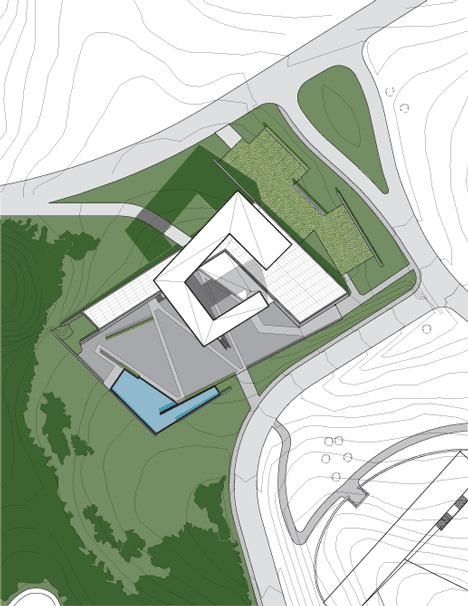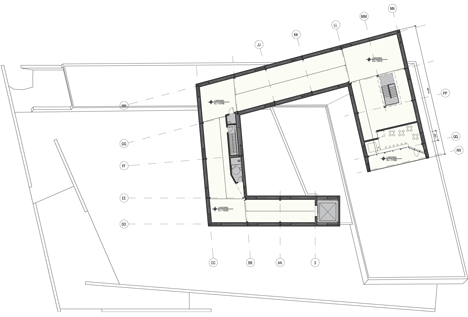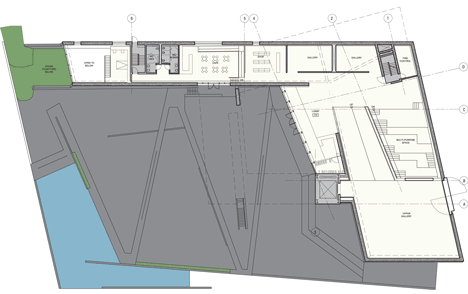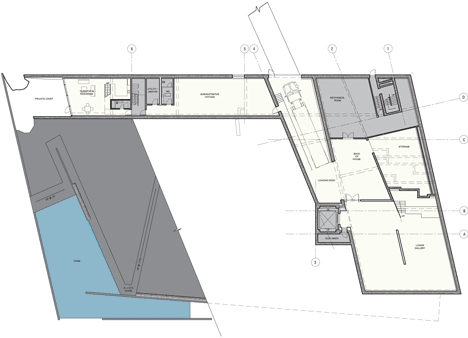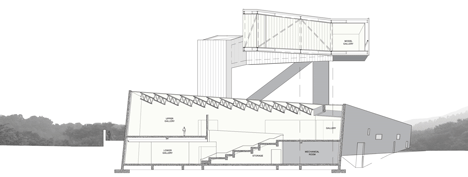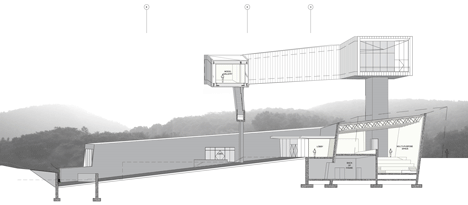Nanjing Sifang Art Museum by Steven Holl Architects
Art galleries are held inside an illuminated glass tunnel and balanced high above the ground at this museum by Steven Holl, the centrepiece of an architecture complex in a forest near Nanjing, China.
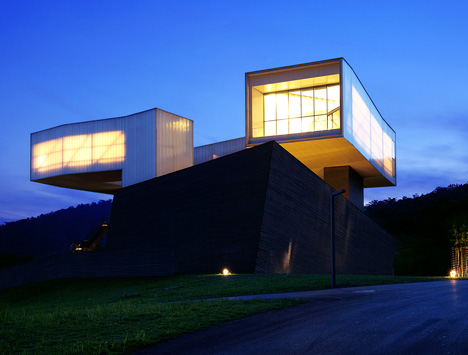
Set to open later this year, the Nanjing Sifang Art Museum forms part of the Chinese International Practical Exhibition of Architecture (CIPEA) programme that will see buildings by both Chinese and foreign architects populate a site within the Laoshan National Forest Park. As well as the museum by Steven Holl, the park will feature a conference centre by Arata Isozaki, a hotel by Liu Jiakun, a leisure centre by the late Ettore Sottsass and a total of 20 houses.
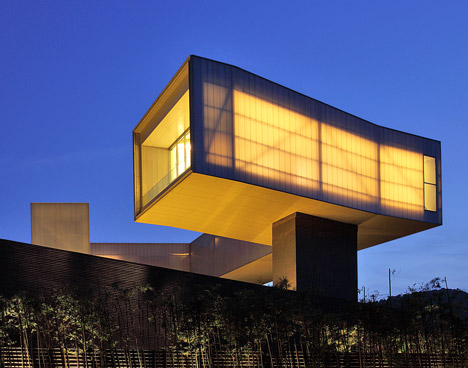
The museum sits at the entrance to the park. Formed of two halves, the building has a two-storey black concrete base that is partially submerged into the site and a translucent glass upper level that is suspended above on a set of chunky columns.
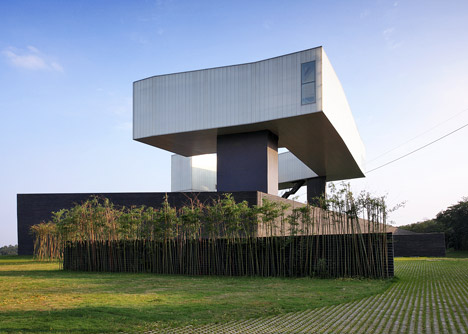
Galleries will occupy all three floors of the building, providing a new home for the Nanjing 4Cube Museum of Contemporary Art. Exhibitions on the lower levels will be accommodated in a series of separate rooms, while on the top floor artworks can be displayed in a continuous sequence that finishes with a view towards Nanjing's city skyline.
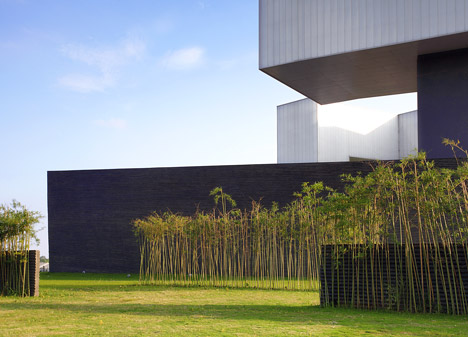
Holl was interested in the difference in the use of perspective between Western and Chinese painting when designing the jolting snake-like form of the building. "The museum is formed by a 'field' of parallel perspective spaces and garden walls [...] over which a light 'figure' hovers," says the studio.
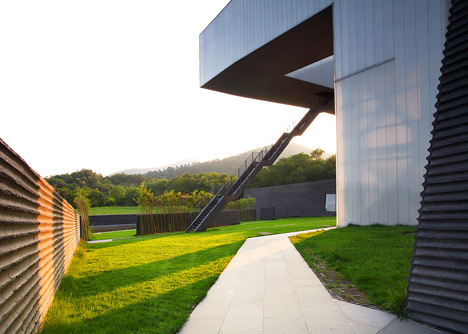
A monochrome colour palette was used throughout. The black tones of the concrete are stains left by its bamboo formwork, which has also left a ridged texture.
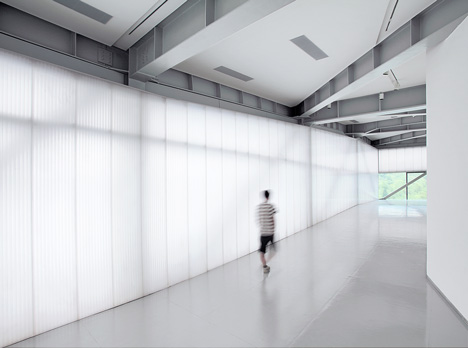
A courtyard is contained at the centre of the plan and features paving stones recycled from old hutong neighbourhoods in Nanjing.
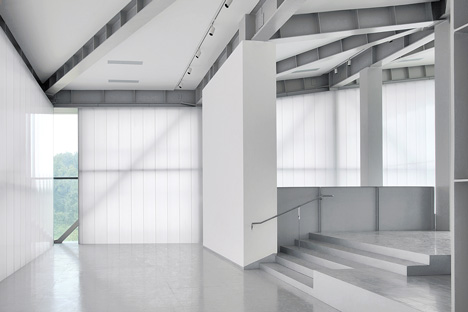
The CIPEA project was first conceived back in 2003 as a showcase of modern architecture. Many of the buildings are set to open later this year and even the houses will be used as galleries, meant to be visited but not inhabited. See pictures of Blockhouse by Zhang Lei of AZL Architects in our earlier story.
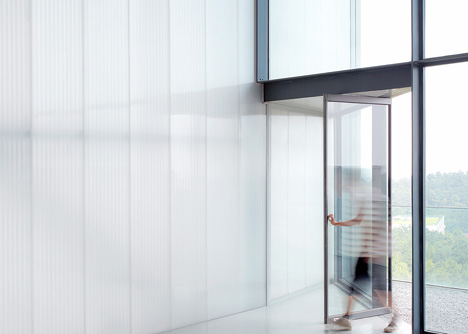
Other recent projects in China by Steven Holl include the Sliced Porosity Block mixed-use complex in Chengdu and proposals for a pair of museums in Tianjin, with one the inverse of the other. See more architecture by Steven Holl on Dezeen.
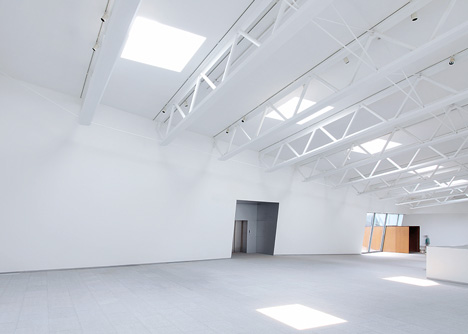
Photography is by Xia Zhi, apart from where otherwise indicated.
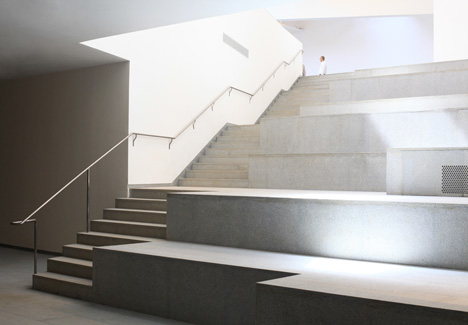
Here are more details from Steven Holl Architects:
Nanjing Sifang Art Museum, Nanjing, China
2003 - 2013
Perspective is the fundamental historic difference between Western and Chinese painting. After the 13th Century, Western painting developed vanishing points in fixed perspective. Chinese painters, although aware of perspective, rejected the single-vanishing point method, instead producing landscapes with "parallel perspectives" in which the viewer travels within the painting.
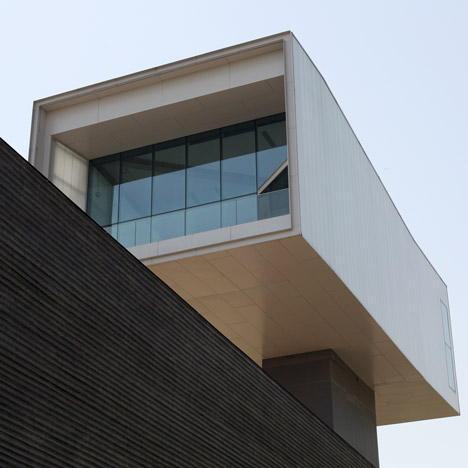
The new museum is sited at the gateway to the Contemporary International Practical Exhibition of Architecture in the lush green landscape of the Pearl Spring near Nanjing, China. The museum explores the shifting viewpoints, layers of space, and expanses of mist and water, which characterize the deep alternating spatial mysteries of early Chinese painting. The museum is formed by a "field" of parallel perspective spaces and garden walls in black bamboo-formed concrete over which a light "figure" hovers. The straight passages on the ground level gradually turn into the winding passage of the figure above. The upper gallery, suspended high in the air, unwraps in a clockwise turning sequence and culminates at "in-position" viewing of the city of Nanjing in the distance. The meaning of this rural site becomes urban through this visual axis to the great Ming Dynasty capital city, Nanjing.
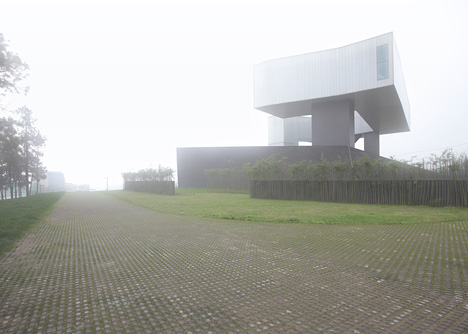
The courtyard is paved in recycled Old Hutong bricks from the destroyed courtyards in the center of Nanjing. Limiting the colors of the museum to black and white connects it to the ancient paintings, but also gives a background to feature the colors and textures of the artwork and architecture to be exhibited within. Bamboo, previously growing on the site, has been used in bamboo-formed concrete, with a black penetrating stain. The museum has geothermal cooling and heating, and recycled storm water.
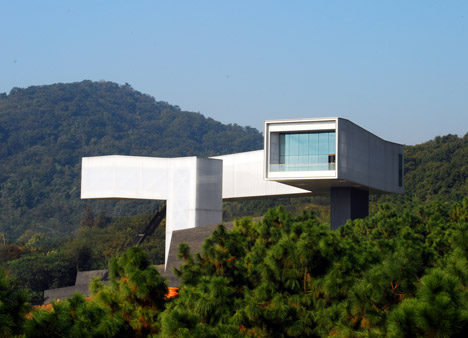
Client: Nanjing Foshou Lake Architecture and Art Developments Ltd
Architect: Steven Holl Architects
Associate architects: Architectural Design Institute, Nanjing University
Structural consultant: Guy Nordenson and Associates
Lighting design: L'Observatoire International
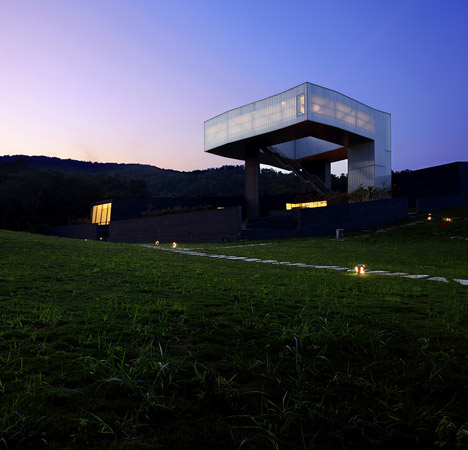
Construction period: February 2005 -
Program: museum complex with galleries, tea room, bookstore and a curator's residence
Building area: 2787 sqm (30,000 sqf)
